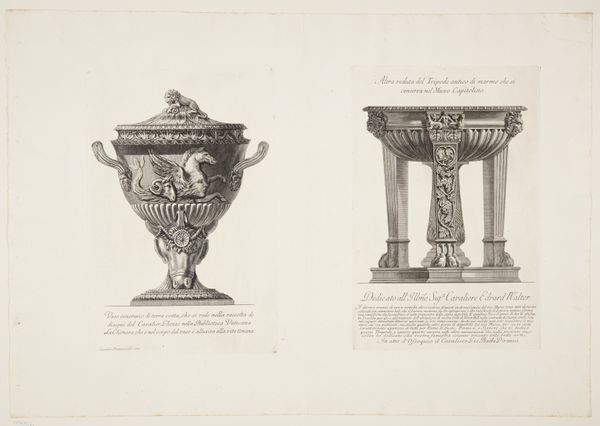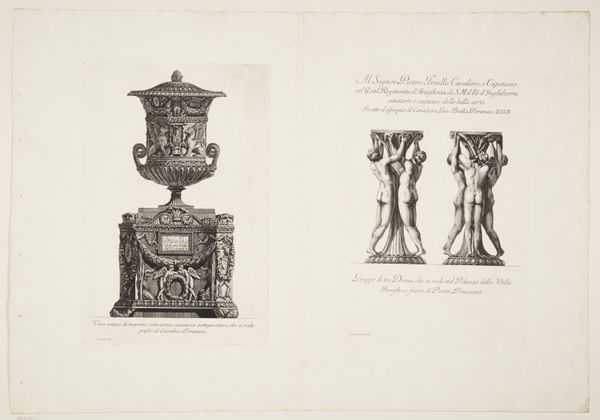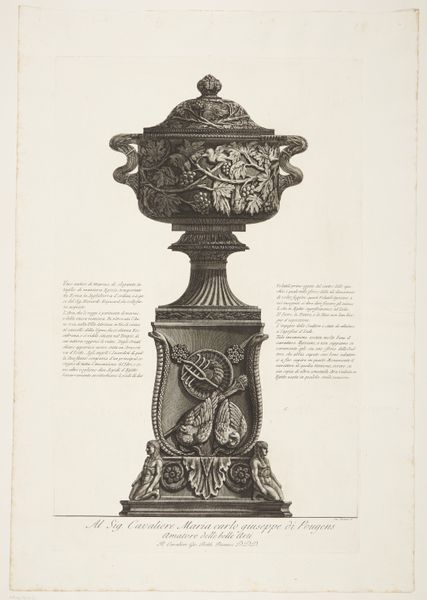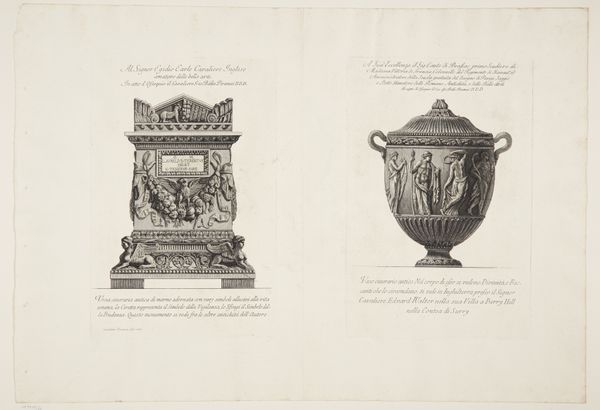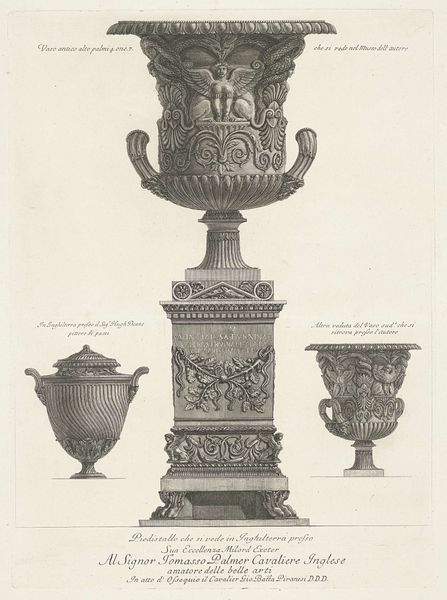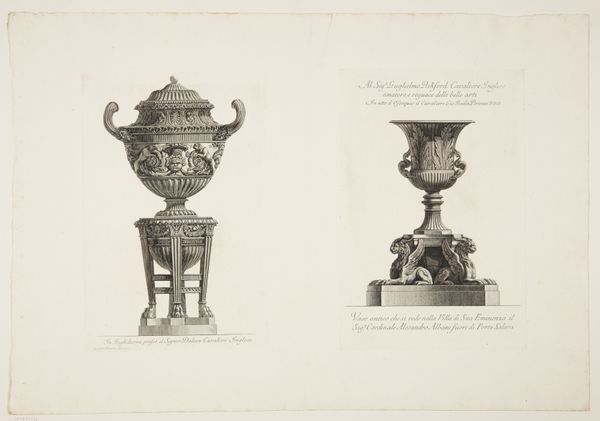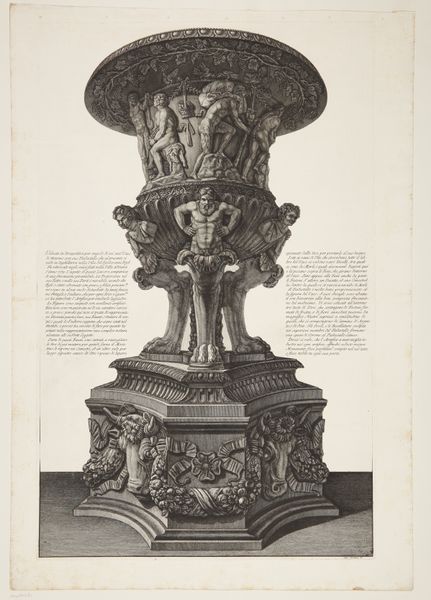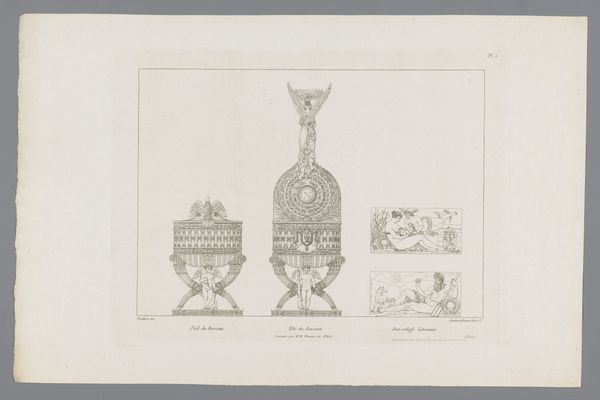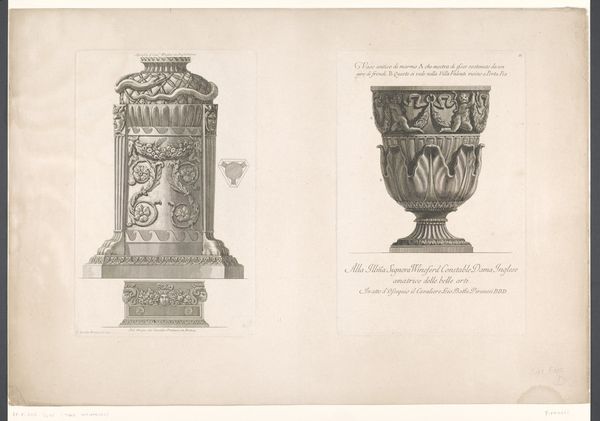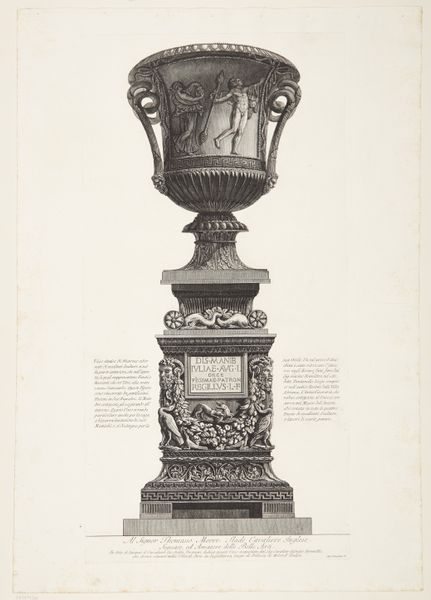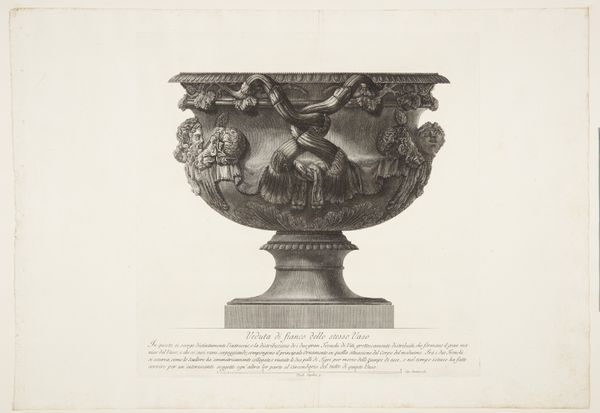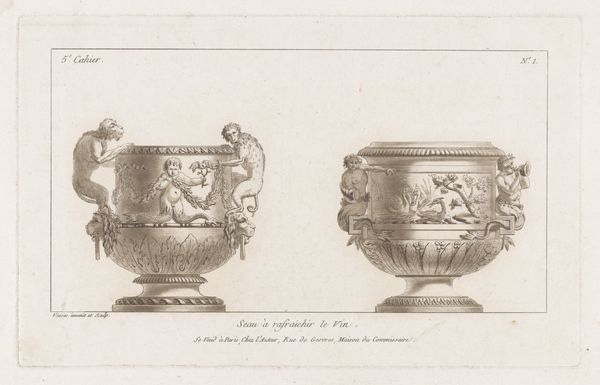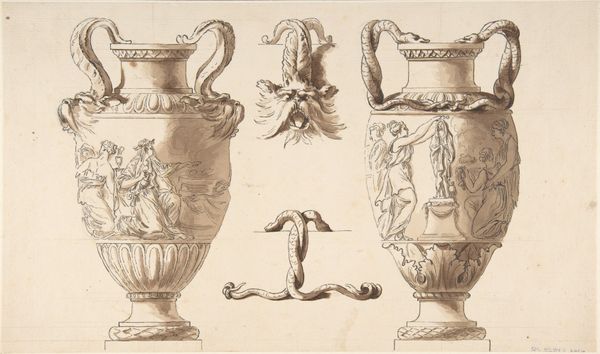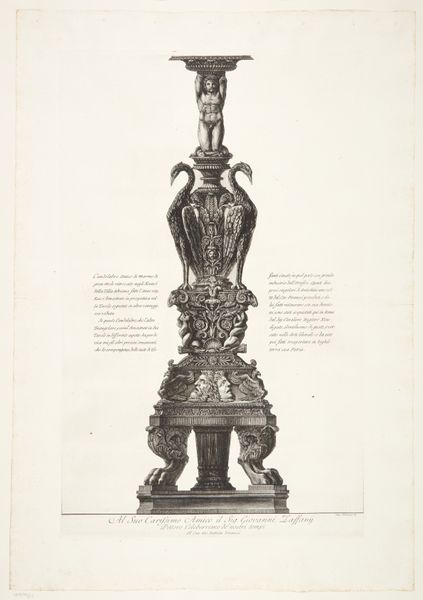
Two views of a cinerary vase; and two bronze lamps, one of them in form of a chariot drawn by two bulls and driven by Diana 1769 - 1778
0:00
0:00
print, etching, engraving
#
neoclassicism
# print
#
etching
#
classical-realism
#
figuration
#
line
#
decorative-art
#
engraving
Dimensions: 550 mm (height) x 701 mm (width) (bladmaal)
Here is the audio guide script for the artwork provided: Giovanni Battista Piranesi created this print of a cinerary vase and bronze lamps sometime in the 1700s. Rather than using paint or pigment, Piranesi worked with an etching needle to incise lines into a metal plate, building up a composition through networks of tiny marks. The material properties of metal are paramount here. Etching enabled Piranesi to suggest the textures of the original objects: the cool, reflective surface of the bronze lamps, and the porous stone of the vase. This technique is inherently reproductive; prints like these were made to disseminate knowledge of classical artifacts. Consider the labor involved in the objects’ original fabrication. Bronze casting and stone carving were highly skilled trades, and this print pays homage to those traditions. But the print is also implicated in a wider system of knowledge and value, in which objects are collected, documented, and circulated as commodities. By focusing on the process and material of this print, we can reflect on how our understanding of history is shaped through both artistic skill, and commercial exchange.
Comments
No comments
Be the first to comment and join the conversation on the ultimate creative platform.
